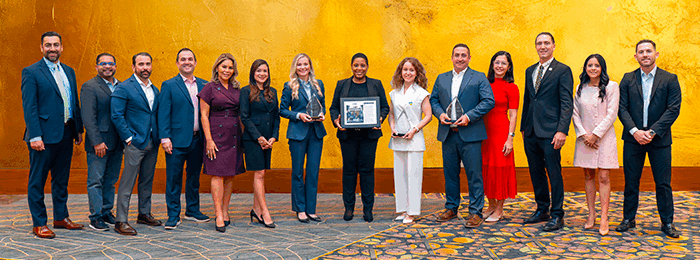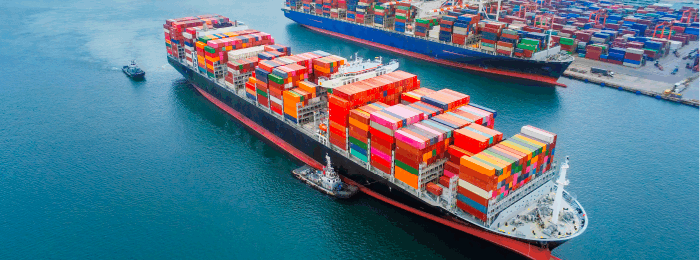
Looking back, the prevailing thought was that terrorists posed a threat to national security while criminal organizations primarily posed a threat to the economy. Looking forward, the landscape has changed significantly. Terrorists groups continue to pose a primary threat on national security; however, their reliance on criminal activity as a funding mechanism has also made them a threat to the economy. Traditional ethnic organized crime groups like the Italians, Russians and Asians continue to primarily pose a threat to the economy. In contrast, newer criminal organizations that thrive in areas of conflict like Afghanistan, Pakistan and Mexico pose a threat to the economy, while also posing a threat to national security. These groups have openly formed alliances with and have increasingly found a financial benefit in collaborating with terrorists.
This evolution has been driven by the financial requirements of the disparate groups. Regardless of the nature of the group — to succeed and sustain operations — they must have ready access to funding. Traditional organized crime groups have an existing financial infrastructure and long-term goals. This sense of financial stability affords them the opportunity to maintain their customary criminal activities. Conversely, newer criminal organizations tend not to have the same financial stability and are geared more to short-term goals. They function best in areas of crisis and/or conflict. This is where they find common ground with terrorists. Terrorists have lost many legitimate funding streams and, therefore, have turned to criminal activity as a main source of income. As a result, newer criminal organizations and terrorists have realized they have much in common and have formed very profitable partnerships. This trend is one that will continue to grow.
The growing nexus between criminals and terrorists should cause law enforcement and the financial services industry to broaden their view of terrorist financing. When looking for or dealing with terrorist financing, we should assess the potential nexus terrorists might have with criminals through their financial activity.
Terrorists and criminals have learned how to benefit from convergence and diversification
How do you broaden the concept of terrorist financing to cover the nexus between terrorists and criminal organizations? You broaden it by looking at this emerging problem as threat finance. Threat finance is an umbrella term used to encompass various types of financing that support activities harmful to national security. The concept of threat finance was given visibility by the Department of Defense (DOD). DOD recognized that threats to national security went well beyond terrorism. There is no singularly accepted definition for threat finance. It encompasses:
- Terrorist financing;
- Transnational criminal organizations (including drug cartels);
- Proliferation and weapons of mass destruction.
That brings us to the intersection between crime and conflict. Criminal organizations and terrorist groups have increasingly found a common ground of mutual benefit. Each has learned how to benefit from conflict through violence and crime. The wars in Iraq and Afghanistan exemplify this fact. More troublingly, terrorists and criminals have learned how to benefit from convergence and diversification.
- Convergence is the intersection where criminals and terrorists work together to support each other with the goal to maximize the benefit of their individual causes. They realize mutual as well as individual benefits, thus promoting collaboration.
- Diversification takes place as organizations mature in operations and sophistication. With maturity and sophistication, they diversify into different activities and thereby grow and strengthen their operations. These organizations rely on legitimate and illegitimate fronts to conduct business in furtherance of operations.
An example of a group who has benefited from convergence and diversification is the Haqqani network operating in Afghanistan. The Haqqani network is closely aligned with the Taliban. They are the most diversified and well-organized component of the Afghan insurgency from a business perspective, occupying key spaces in both licit and illicit economies in Afghanistan and Pakistan. There are many other criminal organizations, who like the Haqqani’s, have benefited from close associations with terrorist groups.
An important commonality shared by criminal organizations and terrorists is their reliance on corruption. To be able to operate with impunity in regions of conflict, ungoverned regions and in regions with more stability, terrorists and criminal organizations rely to a great extent on corruption. In looking at the Haqqani model, they operate in Afghanistan and Pakistan, two of the most corrupt nations in the world. Officials they deal with in that region are more interested in their personal enrichment than the best interest of their countries. Corruption, transnational crime and terrorism form a dangerous trifecta.
Transnational criminal organizations
Transnational criminal organizations (TCOs) pose a serious global economic threat. They also represent an increasing threat to U.S. security and interests both domestically and internationally. TCOs carry out criminal operations across international borders. In that sense, they rely on financial facilitation tools to support cross border activities. Such mechanisms include bulk cash shipment, wire transfers, correspondent banking, trade-based money laundering and the use of shell companies. Their interest in the “bottom line” makes them more dangerous. If they believe anyone poses a threat to their ability to raise and move money, they will react violently. TCOs are typically located in countries with weak rule of law, thus allowing them to operate freely. These organizations pose a significant threat to regional security where they operate and they thrive on conflict. Exacerbating the threat to regional and national security is the willingness of TCOs to work with and provide material support to terrorists.
Drug trafficking is one of the most prolific and profitable criminal activities that TCOs and terrorist groups engage in collectively and individually. Successful drug trafficking operations require increased levels of corruption. Drug trafficking also leads to regional violence and instability. In addition, it causes health and social issues. Other criminal activities that TCOs and terrorist groups engage in collectively and individually include: arms trafficking; human smuggling and trafficking; product counterfeiting; trafficking in contraband; sea piracy; kidnapping and money laundering.
As noted earlier, illicit networks pose a threat to both national security and the economy. Their use of violence and intimidation poses a threat to national security. Their engagement in criminal activity poses a threat to the economy. Corruption is an important key to success for these networks. It acts as an enabler that facilitates their operations. As illicit networks look for new areas to exploit, cyber security has become an increasingly significant threat.
Terrorist-criminal nexus
The crime-terror nexus includes two independent, but related components:
- The involvement of terrorists in criminal activities as funding sources, and
- The linkage between criminal organizations and terrorist groups.
The evolution of the convergence of TCOs and terrorism emerged at the end of the cold war. World events at that time caused conditions that challenged the financial system of terrorism. Terrorists experienced a diminishment in their funding streams. The evaporation of funding sources encouraged and continues to encourage terrorist groups to develop into “narco-terrorist” organizations. Terrorists have increasingly engaged in drug trafficking and other illicit organized criminal activity to acquire money and material in order to sustain their organizational operations.
TCOs and terrorist groups share many operational and organizational similarities and characteristics. They often learn from each other. In so doing, they tend to imitate each other’s successes and failures. Because of their similarities, TCOs and terrorist groups can easily work together and therefore frequently partner with one another. What has taken place is the transformation of illicit groups into hybrid criminal/terrorist entities. The nexus between TCOs and terrorist groups has become increasingly complex and sophisticated.
As a result of the development of these hybrid criminal/terrorist entities, especially as they become complex and sophisticated, the public and private sectors must develop new methodologies and strategies to deal with the problem of convergence. Understanding the crime/terror nexus is the first step toward solving this growing problem.
Similarities between TCOs and terrorist groups include:
- They are generally rational actors
- They are extremely violent, especially with their propensity for kidnapping, assassinations and extortion
- They are highly adaptive, innovative and resilient
- They defy the state and the rule of law
- They pose a global threat to national security and the economy
- They possess resources ranging from leaders, backup leaders and foot soldiers
- They tend to provide social services, particularly terrorists such as Hizballah
- Others
TCOs and terrorist groups have compatible organizational and operational characteristics. They tend to adopt similar methods in terms of characteristics and tactics. However, it is important to note that they strive for divergent ends. Both require revenue and financial support to sustain their organizations and operations. For transnational terrorists, criminal activity supports their political and ideological objectives. As terrorists engage more and more in criminal activities they develop the greed factor, which can blur their sense of ideology. For TCOs, organized crime is conducted primarily for economic ends. TCOs have an inherent greed factor and it is important to point out the greed factor. Greed is a vulnerability that can be exploited by law enforcement and financial services sector investigators.
Organizational mindsets
When looking across the spectrum of TCOs, there is a clear divergence between organized crime groups. Longstanding TCOs and newer crime groups have very different relationships with terrorist groups. The defining line between these groups is the end of the cold war. Longstanding groups were formed well before the cold war ended. The newer groups evolved after the cold war.
Older groups possess long-term financial strategies. They are dependent on long established states, where they have operated for many years. These groups usually reject associations with terrorists. These traditional older groups possess different strategies and motivations that are not conducive to collaboration with terrorists. They have well-established criminal operations and have built infrastructures in established states, mostly through corruption. With maturity, traditional TCOs have diversified into multiple licit and illicit activities. These older groups rely more heavily on the formal financial system.
Traditional TCOs include:
- The Italian/Sicilian mafia
- Russian and Eurasian organized crime
- Japanese Yakuza
- Chinese Triads
- West African criminal organizations
There is a growing nexus between criminal organizations and terrorist groups
These groups share a number of commonalities. They are longstanding, well-established and diverse organizations. Traditional TCOs operate in long-established countries. They are not associated with terrorist groups. These groups are violent, rely on corruption and conduct licit and illicit activities.
Newer groups do not possess long-term and efficient financial strategies. They often originate in ungovernable regions. The newer groups take advantage of the chaos of war and dysfunctional states. They generate huge profits from cooperating with terrorists. These groups share more consistent interests with terrorists that are conducive to collaboration. Newer TCOs have short-term and less-established operations. Newer groups operate best in states in conflict. Like older groups, they rely on corruption to safeguard their enterprise. As they mature, newer groups begin to develop diversified activities. They tend to operate in informal or shadow economies.
There are many newer TCOs. Some of the most notable include:
- Los Zetas drug cartel (Mexico)
- Joumaa drug trafficking/criminal organization (Lebanon)
- D-Company (Pakistan)
- Haqqani network (Afghanistan)
The newer groups named above grew rapidly and share a number of commonalities. They are maturing quickly and are becoming diverse. These four groups operate from countries that have been in conflict. They have profited considerably from their affiliation with terrorists. Like the traditional TCOs, these four groups are violent, rely on corruption and conduct licit and illicit activities.
Case study: Lebanese Canadian Bank
The Lebanese Canadian Bank case is symbolic of the convergence between TCOs and terrorist groups. This case study demonstrates how criminal, drug trafficking and terrorist organizations collaborated in a multi-billion dollar global narco-terrorist drug trafficking and money laundering enterprise. It was a mutually beneficial operation that involved the Joumaa drug trafficking/criminal organization, the Los Zetas drug trafficking cartel, and Hizballah, the most profitable and best organized terrorist group in the world. The Joumaas and Hizballah operate in Lebanon and are closely related, much like the Haqqani network and the Taliban in Afghanistan. The Los Zetas are the most successful and treacherous drug cartel in Mexico. This criminal enterprise succeeded by exploiting financial institutions, facilitation tools, financial mechanisms and other systemic vulnerabilities. The Joumaa organization laundered as much as $200 million per month. This case also illustrates how money laundering is essential to successful criminal enterprises.
Factors that facilitated the operations of the criminal enterprise included:
- The Lebanese Canadian Bank
- Money exchange houses in Lebanon
- Bulk cash shipment/smuggling
- Cross border wire transfers
- Correspondent banking
- Payable through accounts
- Shell companies/front companies
- Corruption
- Structuring
- Money laundering, to include trade-based money laundering and black market peso exchange
The Lebanese Canadian Bank sent 329 wires to correspondent banks in the U.S. totaling $329 million. The funds were used to purchase used cars in the U.S. that were shipped to West Africa and sold. The proceeds from the sale of the used cars were sent back to Lebanon for the Joumaas and Hizballah. The wires to the U.S. were also used to purchase consumer goods in Asia. Those goods were shipped to Colombia and converted to pesos to pay Colombian and Venezuelan suppliers and the Los Zetas.
There were three funding flows in this case. The above mentioned, where money was wired to the U.S. to purchase used cars that were shipped to West Africa; the above mentioned, where money was wired to the U.S. and then to Asia to purchase consumer goods; and the proceeds from drugs sold in the U.S. that were laundered by the Joummas and returned to the Los Zetas in Mexico.
Conclusion
There is a growing nexus between criminal organizations and terrorist groups. The convergence of these entities continues to become more complex and sophisticated. As they mature, these groups are becoming diverse. This convergence and diversification presents a challenge to both the public and private sectors. In addition, the unholy trifecta of corruption, transnational crime and terrorism exacerbates the challenge to the public and private sectors.
To counter the threats posed by TCOs and terrorist groups, the public and private sectors must develop new methodologies and strategies to deal with the problem of convergence and diversification. Understanding the crime-terror nexus is the first step toward solving the problem. In simple terms, methodologies and strategies must be developed to exploit the vulnerabilities of TCOs and terrorist groups. Their principal vulnerabilities are finance, communications and greed. Finance and communication can be traced and used to disrupt, dismantle and prevent. Greed leads to arrogance, which leads to loss of focus and reasonableness. Finance, communications and greed can be easily exploited. They represent fatal flaws for criminals and terrorists.
Dennis M. Lormel, CAMS, president & CEO, DML Associates, LLC, Lansdowne, VA, USA, dlormel@dmlassociatesllc.com










